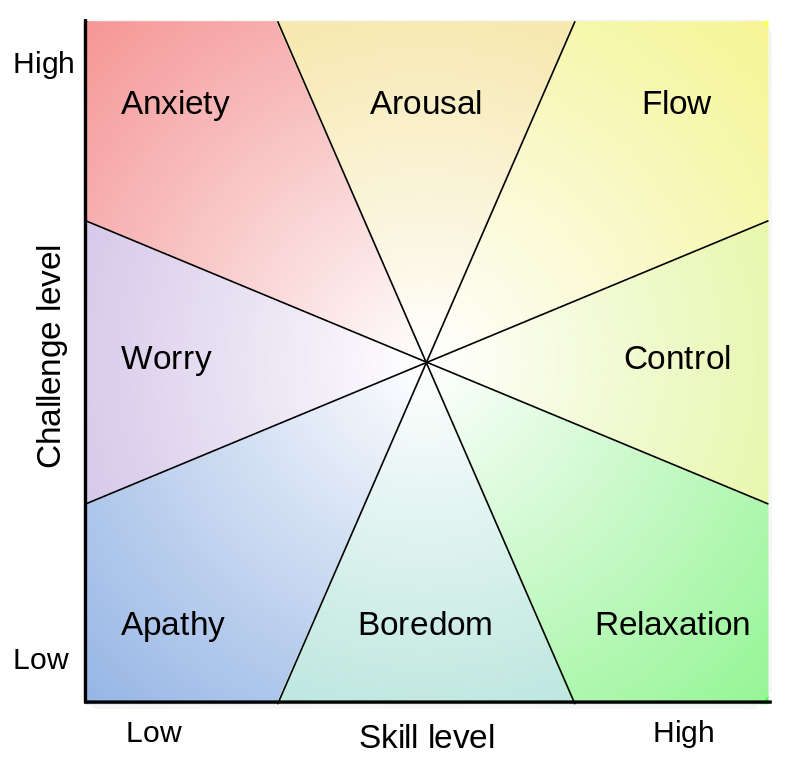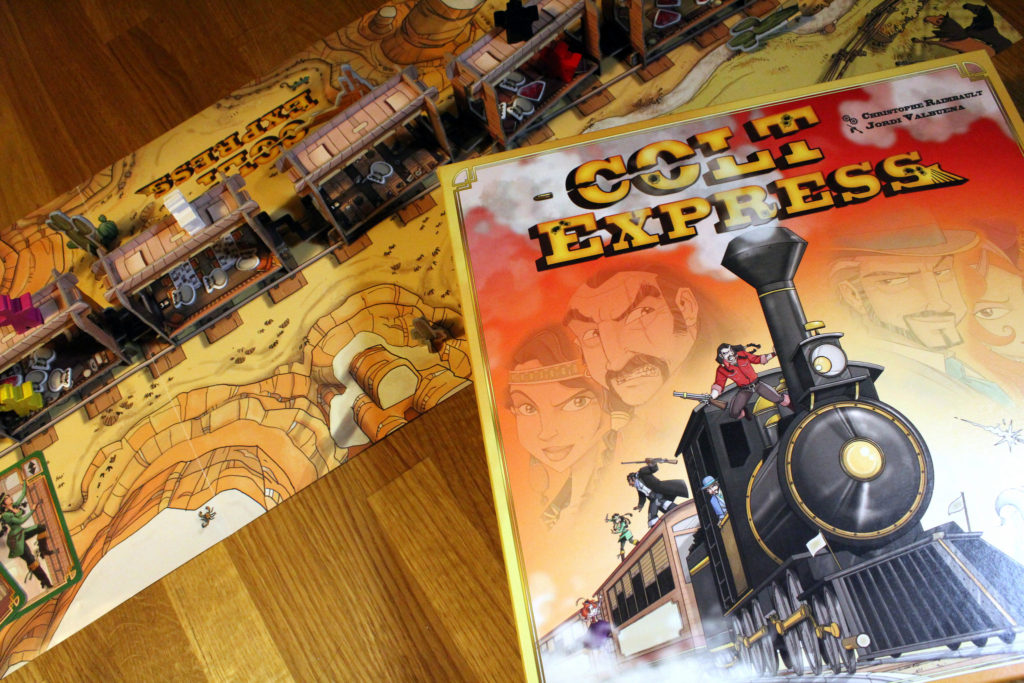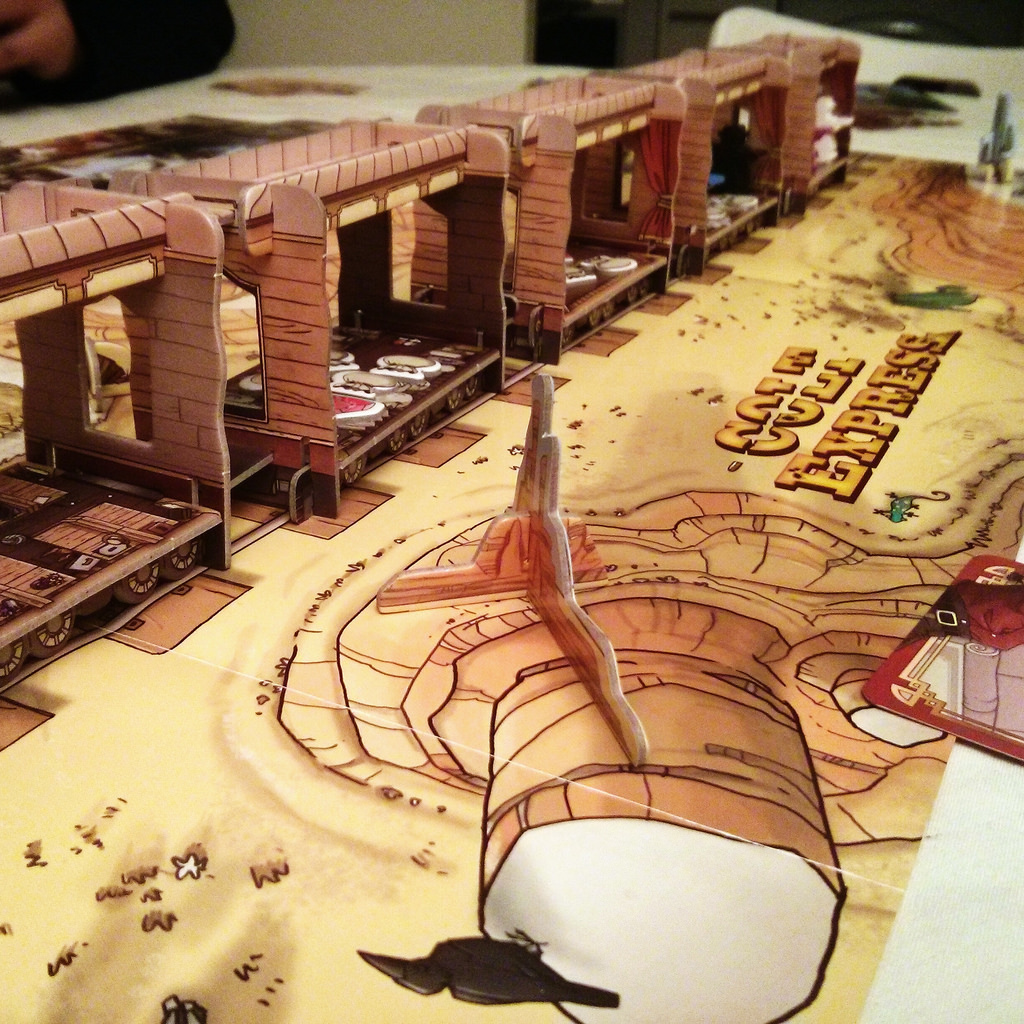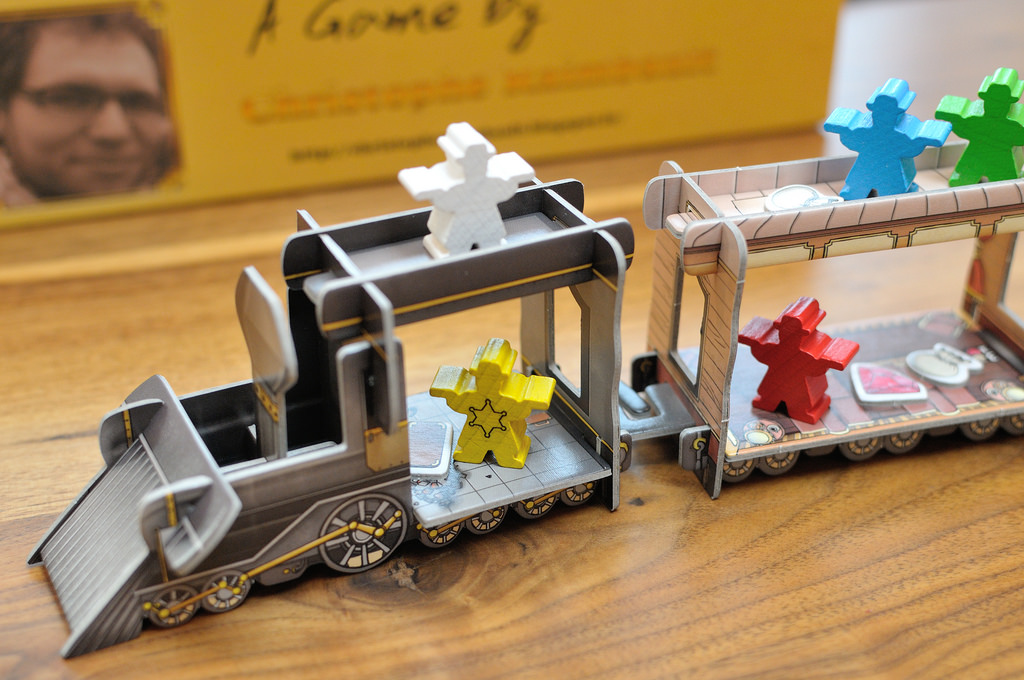Cash ‘n Guns: Making a Game Physical
Prior to becoming a game developer, I was an art thief. When I wasn’t doing downward dog yoga poses to circumvent laser beams, I often found myself getting into Reservoir Dogs style standoffs. I pawned off all my art under a fake name at several pawn shops in a different state each time. I used the funds to pay James Masino to draw the art for War Co. so I could finally make money in a more respectable way.
Looking for more resources to help you on your board game design journey?
Here you go: no email required!
Like this writing style?
Check out my latest blog on marketing here.
The objective of Cash ‘n Guns reminds me of my bygone art thief days because the objective is to rack up the most loot. You do this by coming out uninjured from several violent standoffs. You have a limited amount of bullets (“Bang”) and blanks (“Click”). You choose a Bang or a Click at the beginning of each round and point your gun at someone. Each player decides whether they want to drop out or stay in. If you drop out, you don’t get any loot but you won’t get hurt. If you stay in and no one shoots you, you get a cut of the loot. If you stay in and someone shoots you, you won’t get a cut of the loot and you take a wound. Take too many wounds and you’re eliminated from the game. Each round you have a Boss, who can tell one person to change who they’re pointing their gun at. The possibility of becoming the Boss is one of the perks of staying in a round at the risk of getting shot.
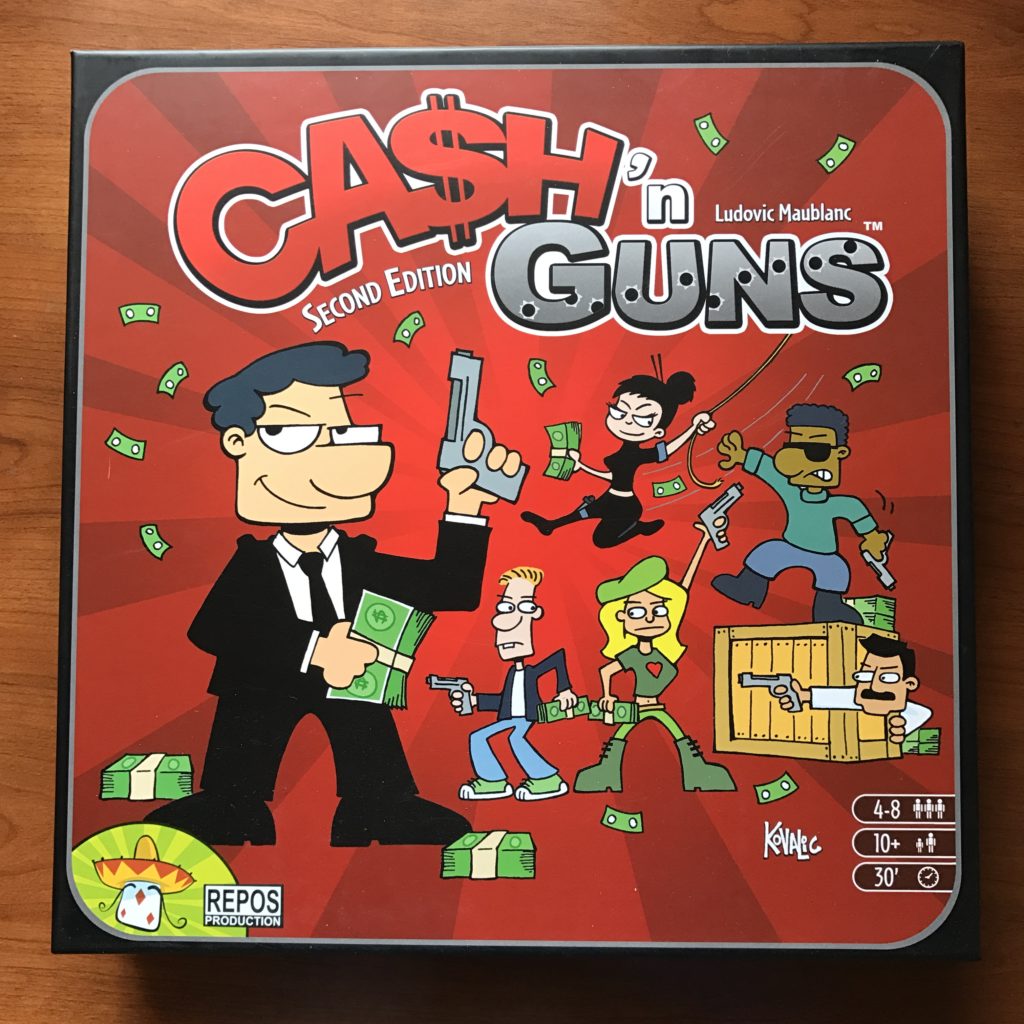
I’m simplifying the rules a bit to make a point with this article, but you can tell it’s an elegant and simple game. Nobody knows Cash ‘n Guns for its rules, though. Everybody knows Cash ‘n Guns for the fact that you point BIG FOAM GUNS at your friends. It’s goofy and a spectacle to behold. Cash ‘n Guns excels as a party game because the foam guns make it visual, memorable, learn-able, and emotive.
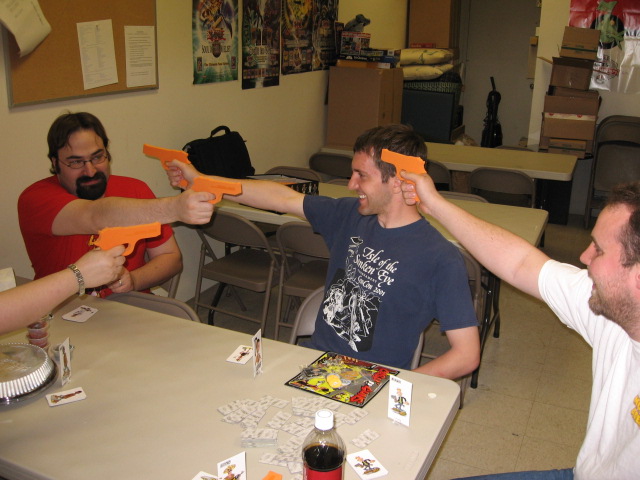
Let’s break down Cash ‘n Guns into a little more detail and discuss why specifically its physicality works so well. I’m going to focus on the foam guns, because they are an inextricable part of the gameplay. The foam guns are why Cash ‘n Guns works so well. It’s no simple gimmick, though, there are many different levels to this.
The Foam Guns Make Visually Appealing Physical Comedy
Board games excel in the modern world because of their physical presence. These are all great qualities in a game – especially a party game. Pointing foam guns at your friends is ridiculous. Those bright orange guns stick out like sore thumbs in the best possible way. It photographs beautifully and it’s extremely memorable.
Cash ‘n Guns is Funny, Which Makes Learning Easier
Laughter is a great teacher. In fact, studies have shown that making students laugh in the classroom drops their anxiety levels. Laughter makes students more receptive to their environment, engaging them more.
Like I said in the 5-Minute Dungeon breakdown, engagement is the bellweather of a great gaming experience. Whereas 5-Minute Dungeon drives engagement through time-ticking intensity, Cash ‘n Guns does it through sheer ridiculousness.
The Game Works without the Foam Guns, but Excels with Them
Cash ‘n Guns dials its comedy up to 11 through the inclusion of foam gun pieces. As I said before, this is no mere gimmick. It drives the emotions behind the game.
Imagine for a moment, a low-budget version of Cash ‘n Guns that has no foam gun pieces. You instead are instructed to make the finger gun hand gesture and point it at your intended target. This works and it would still be the same game. The core engine wouldn’t change, nor would the mechanics or rules. But let’s be real: it wouldn’t be the same without the foam guns.
The inclusion of the foam guns is a matter of theme and theme alone – but it’s integral to the experience. Remember that at the manufacturing stage, every component costs money. Everything you put in that box needs to be evaluated in terms of cost and benefit. The foam guns are unusual pieces and therefore cost money. It’s okay that the Cash ‘n Guns foam guns cost the creators more to produce because they’re funny, photograph well, and sell more copies of the game.
Mindfully made games drive home a single clear message. There are five basic ways you can communicate with players: the core engine, the mechanics, the rules, the internal narrative (theme), and the external narrative (marketing).
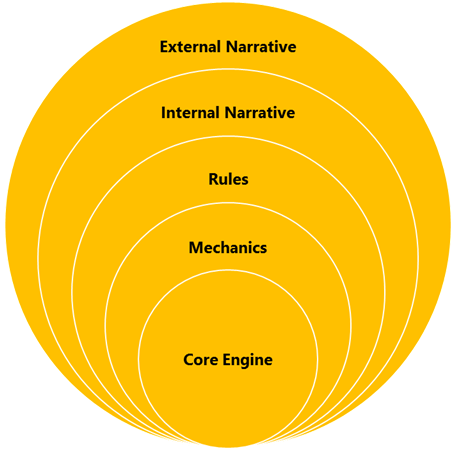
The foam guns provide a physical reminder of the core engine, mechanics, and rules of the game. The foam guns are highly visible, hilarious, and elegant forms of data tracking. The foam guns would technically be classified as internal narrative, since they are part of the theme, but they reinforce the three lower levels. What’s more, because the foam guns are memorable enough to be talked about and photographed, they work beautifully for marketing. The message spreads. People start talking. It builds hype. That’s the external narrative of Cash ‘n Guns. It was silly enough to become legendary.
Key Takeaways for Game Devs
- Cash ‘n Guns excels as a party game because the foam guns make it visual, memorable, learn-able, and emotive.
- Cash ‘n Guns works because its foam guns are bright, remarkable, and memorable.
- Humor is one way of driving engagement. Engagement is the key to learning. Learning is critical to how players play your game.
- The inclusion of foam guns in Cash ‘n Guns is not a gimmick! Though they cost more money, it’s worth it because they’re memorable, take great photos, and sell more units.







